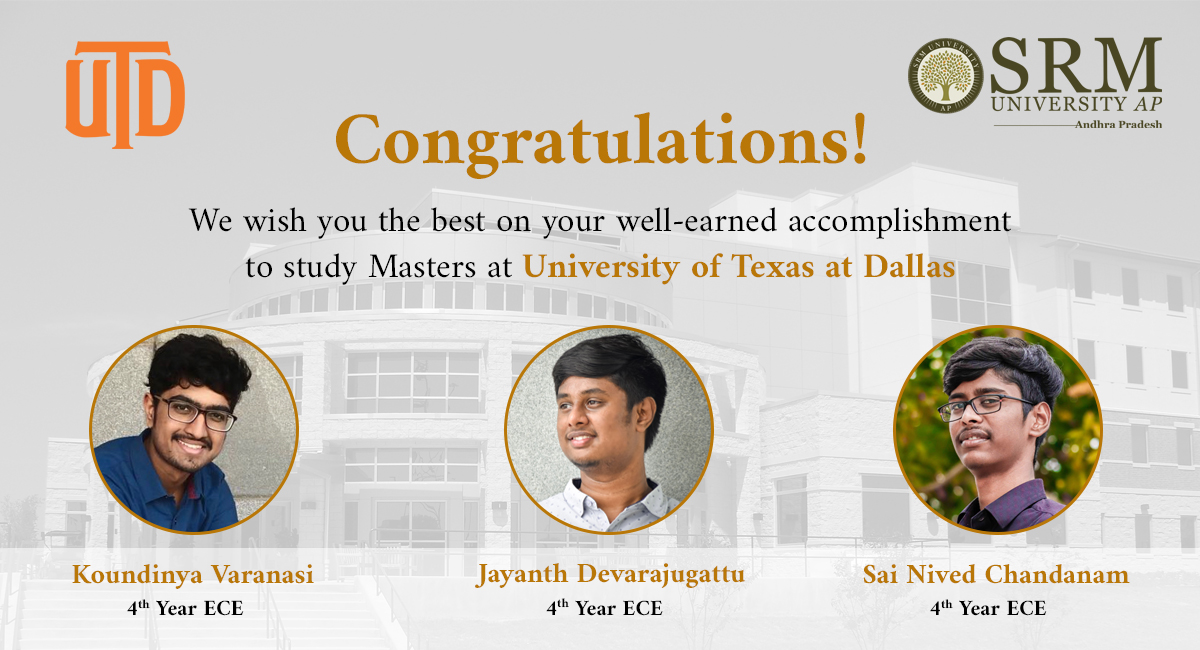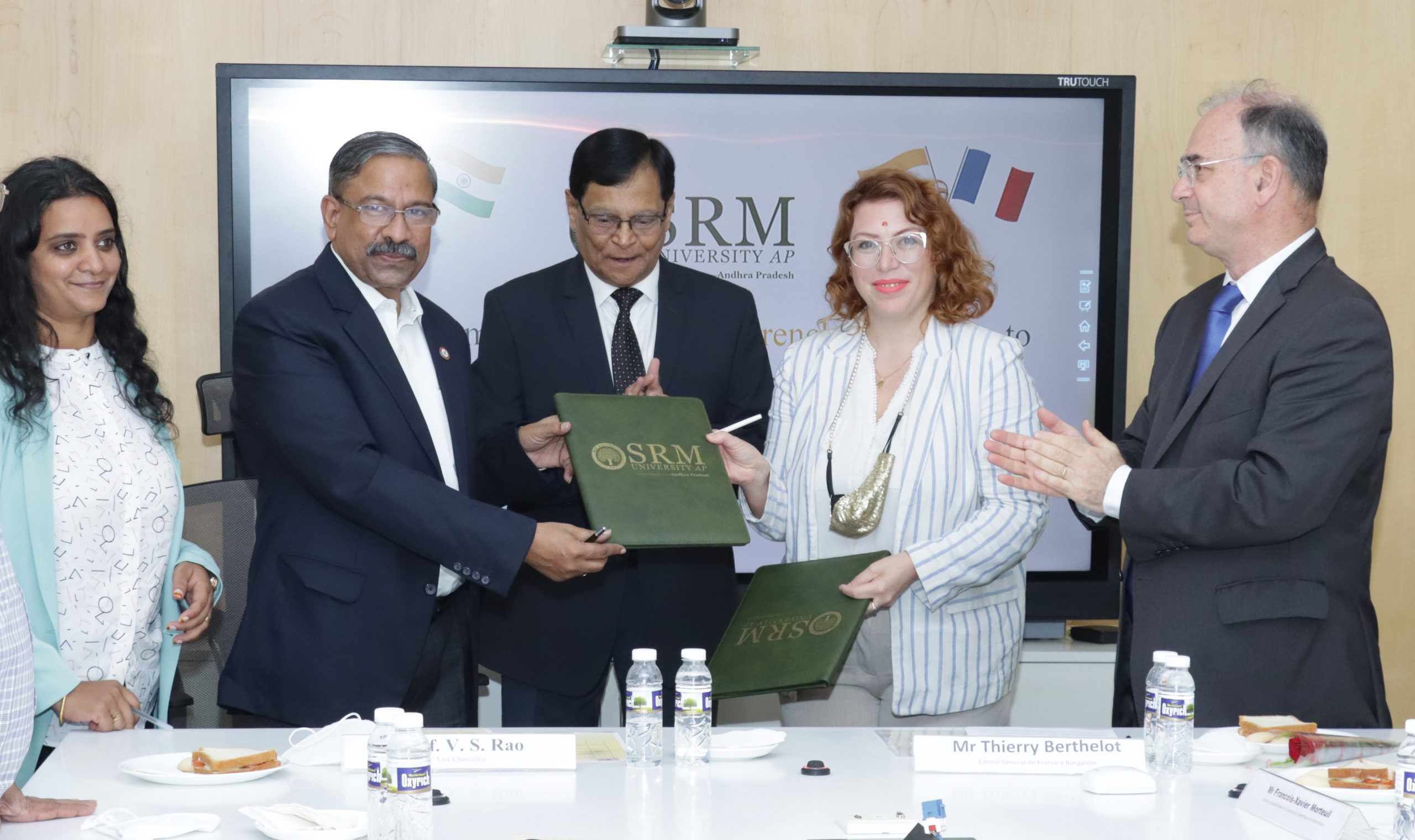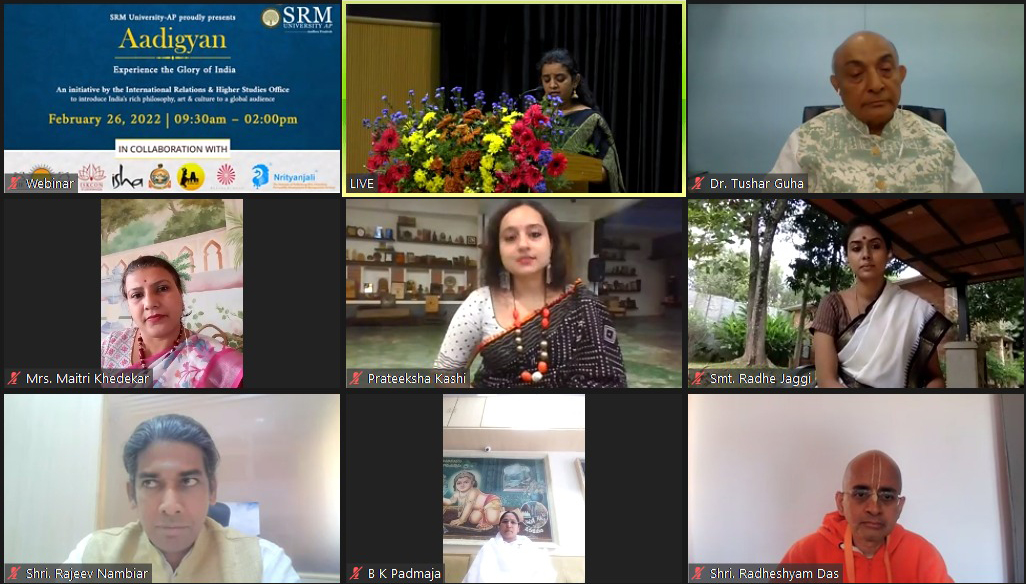Security Framework using Blockchain Technology
The Department of Computer Science Engineering is proud to announce that Dr Sriramulu Bojjagani has published a paper titled “Blockchain-Based Security Framework for Sharing Digital Images using Reversible Data Hiding and Encryption” in the journal Multimedia Tools and Applications (MTAP) having an impact factor of 2.757.
The paper is published in collaboration with D.R Denslin Brabin from the Department of Computer Science and Engineering, DMI College of Engineering, Tamil Nadu and Christo Ananth from the Department of Electronics and Communication Engineering, St. Mother Theresa Engineering College, Tamil Nadu.
Abstract of the Research
Security is an important issue in current and next-generation networks. Blockchain will be an appropriate technology for securely sharing information in next-generation networks. Digital images are the prime medium attacked by cyber attackers. In this paper, a blockchain-based security framework is proposed for sharing digital images in a multi-user environment. The proposed framework uses reversible data hiding and encryption as component techniques. A novel high-capacity reversible data hiding scheme is also proposed to protect digital images. Reversible data hiding in combination with encryption protects the confidentiality, integrity and authentication of digital images. In the proposed technique, the digital image is compressed first to create room for data hiding, then the user signature is embedded; afterwards, the whole image is encrypted. For compression, JPEG lossy compression is used to create high capacity. For encryption, any symmetric block cipher or stream cipher can be used. Experimental results show that the proposed blockchain-based framework provides high security and the proposed reversible data hiding scheme provides high capacity and image quality.

Fig 1: The process of encoding during reversible data hiding
Dr Sriramulu Bojjagani also intends to work on the development of block-chain based solutions to intelligent transport systems and on addressing the challenges of security issues involved in connected and autonomous vehicles.
- Published in CSE NEWS, Departmental News, News, Research News
Pursue Your Dream of Overseas Education with SRMAP
 Pursuing higher education in universities of international repute is perhaps a long-cherished dream of every student. SRM University-AP has always been at the forefront in providing the right avenues for students to explore their inherent talents and in equipping them with the right skillset through educational practices and research programmes of global standard.
Pursuing higher education in universities of international repute is perhaps a long-cherished dream of every student. SRM University-AP has always been at the forefront in providing the right avenues for students to explore their inherent talents and in equipping them with the right skillset through educational practices and research programmes of global standard.
It is an honour for SRM University-AP to announce that three of our students; Varanasi Koundinya, Sai Nived Chandanam and Jayanth Devarajugattu of the Department of Electronics and Communication Engineering have secured admission in the University of Texas at Dallas to the Master of Science in Computer Engineering programme for the Fall 2022 semester.
Exposure to state-of-the-art technological facilities and involvement in research-oriented pedagogical practices enable students to outperform in a world where technology is evolving at a rapid pace. Courses anchored in a multi-stream framework empower students to specialize across disciplines, thereby expanding their choice of higher studies in and outside the country.
In the words of Jayanth Devarajugattu, a strong collaboration of the university with international universities and industries across the globe have been of immense help to seize an opportunity for overseas education. He also marked his gratitude to the faculty members who have provided him with effective guidance throughout the research. “I am extremely grateful to Ramesh Vaddi sir, Siva Sankar sir, Anirban sir, Gangi Reddy sir for guiding us throughout the process by helping us choose the right university and issuing a letter of recommendation”, he said.
Associating with faculty members on various research projects will always offer new insights to students to think differently. “Dr Ranjit Thapa sir with his teaching and research work inspired me the most in pursuing my masters, I look up to him”, said Sai Nived.
All of them expressed their gratefulness to the university for endowing them with appropriate training which helped them maintain good grades, conduct research and publish papers. “Your CGPA and paper publications play a crucial role in making into an international university of your choice”, they mentioned.
The Inter-Disciplinary Experiential Active Learning (IDEAL) pioneered by SRM offers flexibility in course curriculum, thereby giving students the freedom of curating syllabus with respect to their interests and aspirations. Fostering an environment of academic freedom and prioritizing the interests of students in line with the demands of present times distinguish SRM University-AP as an emerging university of world-class standard. Working towards the dreams of students has always been the driving force behind the advancement of SRM University-AP.
- Published in Departmental News, ECE NEWS, International Relations, IR-News, News, Students Achievements
French Delegation in SRM University-AP discusses prospects of academic collaboration
 MoU inked with Rennes School of Business
MoU inked with Rennes School of Business
As part of an official visit to Andhra Pradesh, members of the French Delegation visited the SRM University-AP campus on Friday, 25 February 2022. An MoU has been signed between Rennes School of Business, France and SRM University-AP on student exchange, curriculum development, and articulation programmes. University Vice-Chancellor Prof V S Rao called the MoU “an important milestone for SRM AP” and welcomed students from France to India.
Mr Thierry Berthelot, Consul General de France a Bangalore, reaffirmed the MoU between India and France in the number and quality of student exchanges. “We have reached the aim of 10,000 Indian students by 2020; now, we look forward to increasing the number of Indian students in France significantly to 20,000 by 2025”, he added. The signing of the agreement for the mutual recognition of degrees will facilitate the pursuit of higher education by Indian students in France and French students in India and enhance their employability. The delegation emphasised that the collaboration with Rennes School of Business will further equip students of SRM University-AP to gain professional experience and job opportunities around the world. Mrs Maud LE BARS, South Asia Area Manager Rennes School of Business and Conseillere du Commerce Exterieur de la France, highlighted the student and faculty diversity in France that surpasses language barriers.
Consequently, Dr Naga Swetha Pasupuleti, Associate Director – International Relations and Higher Studies, talked about the strong partnerships SRM AP holds with QS ranked global universities and especially EFREI, France. The delegation interacted with the students and faculty members of SRM University-AP and discussed various possibilities of international internships and study abroad opportunities.
Mr Francois-Xavier Morteuil, Attache Consulaire pour la Coopération Scientifique et Universitaire; Mrs Ambika Anilkumar, Deputy to Attache Consulaire; Mrs Vasudha Murlikrishna, Campus France Manager Hyderabad; Mrs Vidya Suresh, Country Manager ESIGELEC (engineering school in France); and Mr Samuel Berthet, Director of Alliance Francaise of Hyderabad were part of the delegation and explored the university campus.
Pro-Vice-Chancellor Prof D Narayana Rao, Registrar Dr R Premkumar, Deans and Associate Deans of all schools were present in the discussion pertaining to the future scope of collaborations with French academic institutions.
- Published in Departmental News, International Relations, IR-News, News, Paari Current Happenings
SRM University-AP launches Aadigyan: To promote India’s cultural knowledge tradition
 Special invitees shower wishes to the initiative
Special invitees shower wishes to the initiative
Aadigyan, the flagship initiative of the International Relations and Higher Studies office at SRM University-AP, has been launched in a grand ceremony held at the auditorium in hybrid mode on February 26, 2022. Chief guest Shri G Kishan Reddy, Minister of Tourism, Culture, and Development of the North Eastern Region of India, shared the message that it is heartening to launch Aadigyan, which embarks the beginning of sharing Indian values, culture, heritage and art to a global level. “I wish Aadigyan a grand success and congratulate SRM University-AP for providing this wonderful opportunity to the world”, he added.
Prof V S Rao, the Vice-Chancellor, launched the promo video of Aadigyan and remarked that Aadigyan aims to integrate education with the art and culture of India. Dr Naga Swetha Pasupuleti, Associate Director – International Relations and Higher Studies, introduced the partnering institutions- ISKCON; The Art of Living; The Temple Dance; Nrityanjali; Isha Foundation; Rajyoga Education & Research Foundation, Brahma Kumaris; and Vivekananda Institute of Human Excellence, Ramakrishna Math, Hyderabad.
Introducing the Project Samskriti to the students of SRM AP, Smt Radhe Jaggi from Isha Foundation highlighted the need to nurture, conserve, and expose the majesty of traditional Indian arts when these art forms are being practised as hobbies.
As an alumnus of SRM, Shri Radheshyam Das, Founding Director of VOICE (Vedic Oasis for Inspiration Culture and Education), and President of ISKCON, Pune, appreciated the efforts of SRM AP to gear education towards human-making rather than money-making.
“Dance goes beyond the realm of physical reality. Indian dance forms are widely used for therapeutic purposes” highlighted Prateeksha Kashi, Indian Kuchipudi Dancer & Actress. Smt. Himansee Katragadda, Founder – The Temple Dance, further shared her happiness to offer Kuchipudi dance courses to the students of SRM AP.
Smt. BK Shivani, renowned Motivational Speaker & Spiritual Teacher from Brahma Kumaris elucidated the need for living in the fundamental equations of life. Brahma Kumaris will be offering courses on value education and holistic health as a part of Aadigyan.
“Let us not forget the identity and dignity of our own culture and traditions”, said Dr Tushar Guha, Founder & Chairman, Nrityanjali Group, while expressing his pleasure to partner with SRM AP. “Diversity is the basis of existence, and India celebrates diversity”, added Shri. Rajeev Nambiar, Director – Institutional Programs/National Teachers Coordination, The Art of Living.
Other special invitees who graced the virtual ceremony with their inspiring words include Dr Rewant Vikram Singh, Diplomat – High Commission of India, Srilanka; Ms Goli Gabby, Health and Wellness Coach and Educator; Swami Bodhamayananda, R K Math; and Ms Jennifer Mawulolo Ami Ametewee First Secretary – Trade, Tourism & Culture Officer High Commission of India, Ghana.
The event witnessed several cultural performances by the students of SRM University-AP. Ms Revathi Balakrishnan, Assistant Director- Student Affairs, thanked all the distinguished invitees and audience who joined the virtual inaugural ceremony of Aadigyan.
- Published in Departmental News, International Relations, IR-News, News

